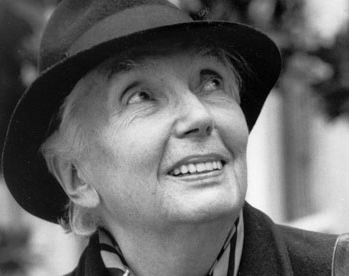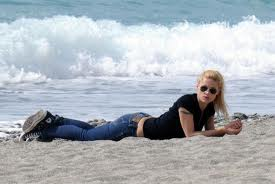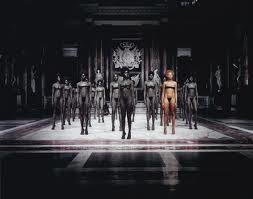 Bordighera/Lalla Romano
Bordighera/Lalla Romano
Lalla Romano (1906-2001), poetess, tireless journalist and writer, among the most important intellectual figures of Italy in the mid-1900s, chose Bordighera near the French border, not just for her vacations, but also to set, in part, her book On Vacation with a Good Samaritan, “In vacanza col buon Samaritano” (Einaudi, 1998). A continuous search back into her memory, with summer vacations in Bordighera and the past, focused on an ancient family story.
Ospedaletti/Katherine Mansfield
Katherine Mansfield (1888-1932) born in New Zealand to a wealthy family, moved to London to study and escape the provincial environment of her native land. Her tales are told (mainly in English) in several collections.
She traveled Europe seeking a cure to her tuberculosis, until when in 1919 she found Ospedaletti, where she wrote her husband, “Ospedaletti is truly the most beautiful corner of the Earth that I have ever seen. It is much more beautiful than Bandol, and its valley seems particularly appealing. The cemetery stands out in my landscape, but you know that I am not a normal creature. Tell all those who need to go abroad to come here. It is so small. There are no great social doings, no parasitical life. The people here are reserved and nice. You and I, in the past, we would have been happy here.”
Varigotti/Michelle Hunziker
 For several years now Michelle Hunziker choses the beach in Varigotti for the official start of her summer season, to the great joy of the sun-bathers on the beach and the paparazzi who follow her every move. For this beautiful and famous TV star, Liguria is her passion, made of nature, friendships, and balance. In a recent interview she declared, “The land, the sea, the olive groves, certain flavors which are unique. Real, true friends of mine live in Varigotti. With them I share the joys and the sorrows of my life. They are the safe harbor which I know I can count on every time I have need. Varigotti, with its houses on the sea, is a little oasis which brings great balance back to me. Even in the winter, when there is no one there, it is beautiful.”
For several years now Michelle Hunziker choses the beach in Varigotti for the official start of her summer season, to the great joy of the sun-bathers on the beach and the paparazzi who follow her every move. For this beautiful and famous TV star, Liguria is her passion, made of nature, friendships, and balance. In a recent interview she declared, “The land, the sea, the olive groves, certain flavors which are unique. Real, true friends of mine live in Varigotti. With them I share the joys and the sorrows of my life. They are the safe harbor which I know I can count on every time I have need. Varigotti, with its houses on the sea, is a little oasis which brings great balance back to me. Even in the winter, when there is no one there, it is beautiful.”
Genoa/George Sand
George Sand, the pen name of Amantine Aurore Lucile Dupin (Paris, 1804 – 1876), the very prolific French writer, author of many novels, romances, and plays, politically active in her time (though a moderated feminist), she is also remembered for her anti-conformist nature and for her affairs with the writer, Alfred de Musset, and Fryderyk Chopin, the composer.
In a letter written in 1839 to her friend, Carlotta Mariani, she writes, “My dear friend, we reached Genoa tossed in the sea by a frightful storm. In this city we have had a very pleasant stay. We have seen magnificent painting, enchanting nature, palaces and gardens, one on top of the other, with a grace that is all their own. To sum it up, Genoa has not diminished itself in my eyes, when compared to my memories. Chopin worked well here, and composed many exercises.”
Genoa/Vanessa Beecroft
 Vanessa Beecroft is one of the most interesting active contemporary artists on the international scene. She lives and works in New York, but was born in 1969 in Genoa, where she attended art high school, Liceo Artistico Barabino and the art academy, Accademia Ligustica. She returned to her native city in 2001 for the performance of “VB48”, a "tableau vivant" animated by 30 models in brown bathing suits in the Salone del Maggior Consiglio di Palazzo Ducale, where they move with solemnity, don’t look people in the eye, not looking to encounter anyone, closed unto themselves, ready just for the snap of the shot.
Vanessa Beecroft is one of the most interesting active contemporary artists on the international scene. She lives and works in New York, but was born in 1969 in Genoa, where she attended art high school, Liceo Artistico Barabino and the art academy, Accademia Ligustica. She returned to her native city in 2001 for the performance of “VB48”, a "tableau vivant" animated by 30 models in brown bathing suits in the Salone del Maggior Consiglio di Palazzo Ducale, where they move with solemnity, don’t look people in the eye, not looking to encounter anyone, closed unto themselves, ready just for the snap of the shot.
Genoa/Madame de Staël
French writer, Anne-Louise Germaine Necker, the Baroness of Staël-Holstein, better known as Madame de Staël (Paris, 1766 – 1817), spent most of her life traveling and writing, gathering cultural solicitations from her voyages and from the artists and intellectuals who she loved to welcome to her salon.
In her “Carnets de Voyage”, when she speaks of Genoa she says, “The port is full of ships. In the evening the sky is the dark, enflamed sky of Italy, through the thick masses of trees that seem to rise to the heavens.”
Sestri Levante and Levanto/Rosa Luxemburg
Rosa Luxemburg (Zamość, 1870 or 1871 – Berlin, 1919) was a German revolutionary of Polish and Jewish origin. A politician and socialist theoretician, she joined the German Social-Democratic Party when its secretary was Karl Kautsky, considered the heir of Marx and Engels. Closely tied to him and his wife, Rosa Luxemburg wrote to Luise Kautsky a letter in which she presents the following delicious picture of Levanto and Sestri Levante.
LEVANTO
Today suddenly the sky is blue, the sun is hot, and the sea is a dark blue with whitecaps that catch the light as if it were snow…
Levanto is a little nest which is little known in the rest of the world, (thank God).
SESTRI LEVANTE
The town is nestled among soft Apennine hills covered by olives and pines in all the tones of green. Here there is peace and quiet, interrupted only once in a while by the tragic verse of a mule and the hot yells of the muleteers. As for the rest, just a couple of figures asleep at the entrance to a couple of shops on the main street, and children playing in the sand, and red and white cats that slink across the road from one hedge to another.
Lerici/Mary Shelley and Virginia Woolf
Mary Shelley, (London, 1797 –1851), novelist, essay writer, and biographer, wife of the poet, Percy Bysshe Shelley, during her sojourn in Lerici wrote, “The bay has a promontory at each end, covered with greenery, and crowned by castles, at the feet of which lie Lerici and San Terenzo. Watching while the sun sets on this landscape, the stars come out, the moon rises; it is all of such beauty that it takes your breath away.”
Almost a hundred years later, in 1933, the writer, Virginia Woolf (London, 1882 – 1941) came to Lerici following on the footsteps of the Shelleys. She jotted down the notes, “A windy little town. High houses, Mediterranean, painted in pink and yellow, full of sea spray. Is there a word that describes the fullness of the sea?”
Trebiano/Simone de Beauvoir
Just a few kilometers in the mountains behind Lerici is Trebiano. Simone de Beauvoir (Paris, 1908 –1986) one of France’s most famous writers, gave a portrait of the town in her 1972 novel, All Said and Done, where she writes, “My sister no longer lives in Paris. … In the summer in Italy, in her house in Trebiano, she works in a great studio filled with sunlight. … I finally reached the village which leads on to Trebiano – from the bottom of the hill, the village seemed huge, with its castle, it majestic baroque church, its town walls rising straight out of the rock… What a perfect reward, to find myself here, seated on a terrace with my sister, looking out over the countryside and the sea!”
Sarzana and the Valley of the Magra/Marguerite Duras
Marguerite Duras, (Saigon, 1914 – Paris, 1996) French writer and director, set part of her 1950 novel, “The Sailor from Gibraltar” here between the flat lands on the Magra River and Sarzana. “There were few houses along the river, but many orchards, surrounded by fences. In front of each one was a small private bridge and boats which the peasants would fill with fruit. Slowly as time passed, traffic increased. The great part of the boats, once filled, would head for the sea with their cargo covered with a large canvas, to protect it from the sun. The Magra must be incredible, just like he said. Its waters were clear, and warm to the point where you could fall asleep in them…”